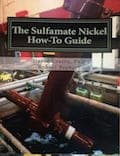
-----
Nickel sulfamate filtering issues
Q. We inadvertently dosed our nickel sulfamate plating solution with activated carbon powder. What micron filter bag should we use to clean up this mess? (Leaving the carbon in there is not an option)
Arthur CambellProcess Engineer - OKC, Oklahoma, USA
December 31, 2009
|
|
A. If you put in quite a bit, then I would start with a 15 micron bag to get the bulk of it out as quick as you can. You might even consider a 20 or 25 micron if you really have a lot of it. If it is a powder, it will clog up a low micron bag rather quickly. I would then go to a 10 micron bag which should be good enough. To be super sure that you do not risk parts, use a 1 micron bag. - Navarre, Florida January 5, 2010 A. Start with five micron or more then continue filtering down to one micron. If you had some organic additives remember that they have been partially or totally removed, so you will need to replenish them. Guillermo MarrufoMonterrey, NL, Mexico January 6, 2010 A. If the nickel solution is in the plating tank: filter it it into a clean storage tank through a 10-15 micron filter. The filter will not remove all the carbon, but it will flow reasonable well. The continue to recycle through the filter for a few hours. Then filter back into the now cleaned plating tank through a 5 micron filter. This will remove almost all the carbon. Place a clean 5 micron filter on the plating tank and recirculate for more hours. Turnover should be several times the volume of the tank per hour, complete turn over 5 or more times per hour. The next day you should be able to add any addition agents , wetter for example, boric acid and nickel if necessary.  Don Baudrand Consultant - Poulsbo, Washington (Don is co-author of "Plating on Plastics" [on Amazon or AbeBooks affil links] and "Plating ABS Plastics" [on Amazon or eBay or AbeBooks affil links]) January 6, 2010 |
![]() Thank you all for your replies.
Thank you all for your replies.
- OKC, Oklahoma, USA
January 9, 2010
adv.

"The Sulfamate Nickel How-To Guide"
by David Crotty, PhD
& Robert Probert
published Oct. 2018
$89 plus shipping
Q, A, or Comment on THIS thread -or- Start a NEW Thread